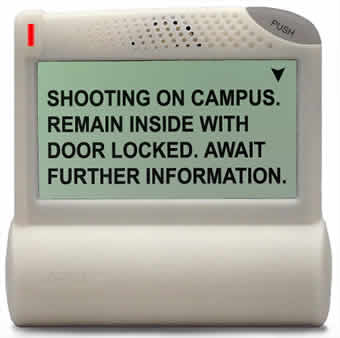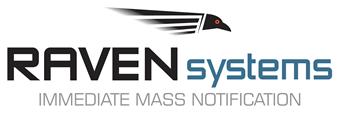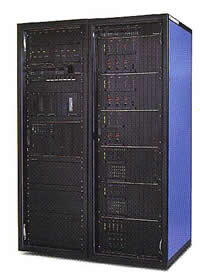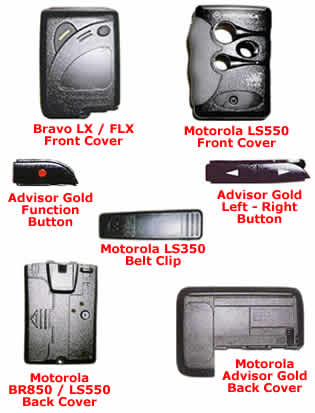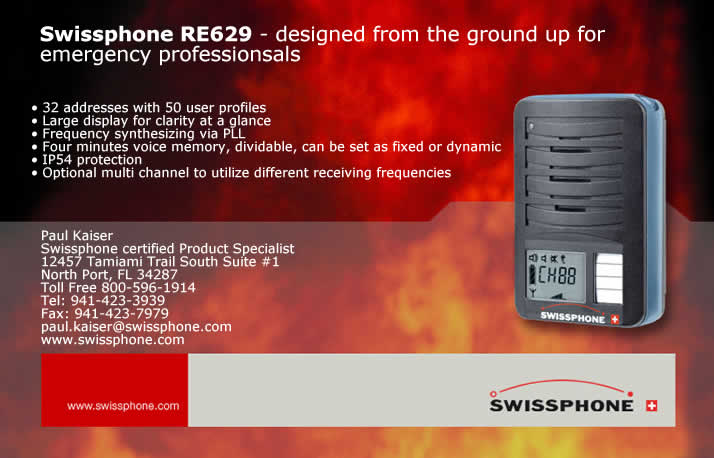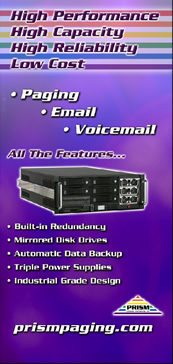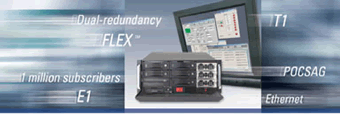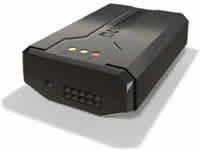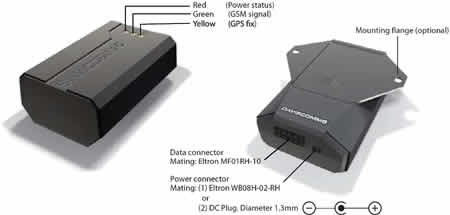25 Most Influential People in Mobile Technology
 Instrumental. Innovative. Impactful. These terms served as our guide in our search for this year’s power brokers shaping the present (and future) of mobile technology. The contributions from these masters of the industry over the last 12 months have molded portable devices, policies, wireless technology, and, ultimately, your purchases. We can’t wait to see what they do next. Read on to uncover who we selected as the mobile tech titans to watch in 2008. Instrumental. Innovative. Impactful. These terms served as our guide in our search for this year’s power brokers shaping the present (and future) of mobile technology. The contributions from these masters of the industry over the last 12 months have molded portable devices, policies, wireless technology, and, ultimately, your purchases. We can’t wait to see what they do next. Read on to uncover who we selected as the mobile tech titans to watch in 2008.

# 25 Most Influential Person in Mobile Technology Jon Lech Johansen Position: Cofounder, doubleTwist
Age: 24
Location: San Francisco, Calif.
As a teenager Johansen was embroiled in a criminal case stemming from his work to make DVDs playable on Linux machines—an effort that necessitated breaking the DVD copy-protection scheme. Exonerated after three years, he’s gone on to become the savior of users who chafe under restrictive and annoying DRM, “freeing” a number of locked-down media formats so they can be played on more devices. Johansen’s next big challenge is to make the sharing and syncing of media as easy as e-mail. The result is doubleTwist, desktop software available for PC and Mac that lets you upload directly from iTunes, invite Outlook contacts or Facebook friends, and share music, pictures, and videos by simply dragging and dropping files. The coolest feature is doubleTwist’s ability to convert music you’ve purchased from the iTunes store to MP3 format. From there you can sync to a growing number of mobile devices, including Nokia N Series phones, the LG Voyager, Windows Mobile devices, and the Sony PSP. Video-sync support is coming soon. Did You Know: Also known as “DVD Jon,” Johansen was awarded a prize from a Norwegian private school for making an outstanding contribution to society for the same work—to break DVD copy protection—that got him indicted.

#24 Most Influential Person in Mobile Technology Matt Zimmerman Positions: CTO, Canonical; chairman, Ubuntu Technical Board
Age: 29
Location: London Ubuntu is likely the best hope for seeing Linux break into the PC mainstream; there’s a reason Dell offers it as an OS option on a number of its notebooks. Focused on ease of use and frequent updates, Ubuntu is winning over many new users. This is thanks in no small part to Zimmerman, who as chairman of the Ubuntu Technical Board is responsible for the engineering and technological innovation that goes into Ubuntu as well as for determining where Canonical (Ubuntu’s commercial sponsor) will focus development resources. A primary goal for the next release: seamless and pervasive Internet access on the go. Did You Know: Zimmerman is an alumnus of the Computer Science House (a sort of high-tech fraternity) at the Rochester Institute of Technology.

#23 Most Influential Person in Mobile Technology Cliff Pemble Position: President and COO, Garmin
Age: 42
Location: Kansas City, Mo. Handset makers are slapping GPS onto phones left and right, but Garmin’s upcoming nüvifone starts with the company’s tried-and-true navigation knowledge and folds a quad-band, 3G, GSM phone into the mix. This daring move, in which Pemble is instrumental, should bring a new level of navigational polish to the cell phone. But Pemble isn’t putting all of his eggs in that one basket. The company recently launched an upgrade to Garmin Mobile, which brings a new interface and Google Local search to BlackBerry, Symbian, and Windows Mobile. And Garmin’s standalone GPS devices will be getting smarter with an upcoming feature that will allow consumers to send trip-planning results from Mapquest.com to their navigator. Did You Know: Pemble holds a BA in mathematics and computer science from MidAmerica Nazarene University.
 
#22 Most Influential People in Mobile Technology John Bicket and Sanjit Biswas Positions: Cofounders and CTO (Bicket) and CEO (Biswas), Meraki
Ages: 26 and 28
Location: Mountain View, Calif. Free municipal Wi-Fi consistently tantalizes and frustrates: It’s easy to imagine but hard to do. Meraki’s products, derived from technology developed by Biswas and Bicket during their doctoral research at MIT, may finally spread Wi-Fi coverage across cities in the U.S.—and disconnected villages in the rest of the world. Thanks to novel mesh-networking algorithms and powerful hardware made from cheap, off-the-shelf components, Meraki’s offering can share a single Internet connection across many acres and users. A Meraki deployment is already functioning in San Francisco (where the company picked up the baton dropped by Earthlink), and we expect Biswas and Bicket’s technology to spread in the U.S. and abroad. Did You Know: At age 15, Biswas was the youngest computer engineer ever hired by Oracle. Bicket co-led the MIT research project that later became Meraki.
 #21 Most Influential Person in Mobile Technology Blake Krikorian Position: Cofounder, CEO, and chairman, Sling Media
Age: 40
Location: San Mateo, Calif. Sling Media remains the dynamic engine of place-shifting content, allowing Slingbox owners to access their favorite TV shows, sporting events, and movies over whatever wireless network is available to their laptop or smart phone, wherever they happen to be. Krikorian steered the Sling ship into deeper waters with its acquisition by EchoStar last year, while continuing to explore the frontier of place shifting with the upcoming Clip+Sling service, which successfully navigates the legal minefield of sharing content clips between users. We expect Krikorian to further expand the possibilities in the year to come with its SlingCatcher, which enables laptop owners to stream video from their PC to their TV. Did You Know: Krikorian is a huge fan of TiVo.

#20 Most Influential Person in Mobile Technology Mike Schroepfer Position: Vice president of engineering, Mozilla
Age: 33
Location: Palo Alto, Calif. “People ask us all the time what Mozilla’s going to do about the mobile Web, and I’m very excited to announce that we plan to rock it.” So said Schroepfer on his blog last October, and he’s overseeing the development of the Mozilla browser (which underlies Firefox) to make it true. He has made mobile development a priority and supervised the addition of mobile browser experts to the Mozilla team. Mozilla-based mobile browsers are already available on Nokia’s Internet Tablet products, and Schroepfer plans to bridge the gap between the mobile and desktop browsing experiences: Eventually the same Mozilla code base that powers your desktop browser could also live on your phone. Did You Know: Schroepfer goes by Shrep.

#19 Most Influential Person in Mobile Technology David Hill Position: Chief designer, Lenovo
Age: 50
Location: Raleigh-Durham, N.C. In mobile technology, slim and light is a grail that’s forever receding, because what was last year’s impossibly trim is today’s status quo. This year, Lenovo has set the pace. Hill is the chief designer behind the ThinkPad X300, a laptop that pushes the envelope by literally fitting into it, just like Apple’s MacBook Air. A black yin to Apple’s yang, Hill’s creative risk-taking paved the way to a machine that packs more of the punch business users demand (removable battery, optical drive, built-in mobile broadband) into a remarkably compact and lightweight chassis, setting a new target for the competition. Did You Know: Hill holds more than 50 patents focused on design innovation.

#18 Most Influential Person in Mobile Technology Marissa Mayer Position: Vice president of search products and user experience, Google
Age: 32
Location: Mountain View, Calif. Mayer’s title belies her importance at Google, where she operates as a gatekeeper, deciding which projects and ideas that bubble out of the company genius pool are worthy of the founders’ consideration for public consumption. Any mobile Google service (Google Maps Mobile, Gmail Mobile, GOOG-411, etc.) you use is likely to have passed the “Marissa gauntlet,” and is just as likely to have been sharpened in its passage. As Google’s twentieth employee, she’s been in it since the beginning, and we expect her influence to play a significant role in the company’s upcoming offerings. Did You Know: In her spare time, Mayer teaches introductory computer programming classes at Stanford.

#17 Most Influential Person in Mobile Technology Anssi Vanjoki Position: Executive vice president of new markets and general manager of multimedia, Nokia
Age: 52
Location: Helsinki, Finland Over the past four years, Vanjoki oversaw Nokia’s N series line, which has been on the leading edge of mobile multimedia devices. Last year’s high-end N series handsets and Internet Tablets were category-defining products, and under Vanjoki, Nokia expanded the definition of a handset company with its forays into multimedia services through its Ovi content portal. Vanjoki’s mandate expanded to cover all Nokia products, thanks to a management restructuring this year, so he’s now less focused on multimedia—though this also reflects the fact that the distinction between phones and computers is fading, a transformation in which he has played an important role. Did You Know: Vanjoki is a first-class knight and commander of the Order of the White Rose of Finland.

#16 Most Influential Person in Mobile Technology Kevin Martin Position: Chairman, FCC
Age: 41
Location: Washington, D.C. Although Martin has been gored by critics for his efforts to relax media consolidation regulations, his (perhaps reluctant) support for the Google-driven “open access” requirements in this year’s massive spectrum auction is definitely a good thing. Given that carriers can cozy up to the FCC more effectively than the average consumer, it was a relief when Martin agreed to require the winner of the coveted 700-MHz spectrum block to allow access to any compatible device and application a user may wish to connect to the network. Despite some initial wailing and teeth-gnashing by carriers, the wireless providers acquiesced to the consumer-friendly requirements. Did You Know: Martin married his Harvard Law college sweetheart, Cathie.

#15 Most Influential Person in Mobile Technology Shantanu Narayen Position: President and CEO, Adobe
Age: 44
Location: San Jose, Calif. Shantanu Narayen knew back in 2005 that Flash technology would become much more than a download that allowed you to play fun, time-wasting games. That’s why he co-led the $3.4 billion acquisition of Flash pioneer Macromedia. Today, Flash not only drives YouTube, but it’s quickly becoming one of the determining factors for the viability of smart phones and other types of handheld Internet gadgets. It’s no wonder Microsoft recently licensed Flash Lite for its Windows Mobile platform. In fact, more than half a billion mobile devices have shipped with the software so far. Narayen, who became CEO in December of 2007, is accelerating Adobe’s mobile evolution even further with new services like Flash Home (a start screen for phones with personalized content) and Flash Cast (an application that caches data to deliver news, traffic, stocks, and weather without surfing the mobile Web). Add in bold new initiatives like Photoshop Express and the Adobe AIR platform, and you have a CEO who is smart enough to know that his company’s livelihood depends upon thinking outside the boxed software. Did You Know: Narayen used to work for Apple.

#14 Most Influential Person in Mobile Technology Jon Rubinstein Position: Executive chairman, Palm
Age: 51
Location: Sunnyvale, Calif. If there is one person that can reverse Palm’s fortunes and put it back on top of the smart phone world, it’s Jon Rubinstein, whose name may ring a bell for Apple fans: He was on the engineering team that conceived the iPod and later stood as head of the entire iPod division. He also led the group of Apple engineers that developed the first colorful iMac. Today, Rubinstein puts the same leadership and creativity into the mobile handset business at Palm, where he heads up the company’s product development efforts. Rubinstein came on board just as Palm was putting the finishing touches on the Centro, and it’s no coincidence that CEO Ed Colligan has said that this device has a higher sell-through rate than any other smart phone to leave Palm’s doors. It blew past the one-million mark in March. There’s no doubt that success runs through Rubinstein’s veins, and the fate of Palm depends on it through the company’s complete overhaul of the Treo, which will debut next year. Did You Know: In 2007, the iPod generated $8.3 billion in revenue. Palm’s revenue for 2007 was $410.5 million.

#13 Most Influential Person in Mobile Technology Jeff Omelchuck Position: Executive director, EPEAT; founder and director, Green Electronics Council
Age: 49
Location: Portland, Ore. Jeff Omelchuck has a good relationship with nature. “I grew up in Montana enjoying outdoor activities like backpacking, skiing, and mountaineering with an ethic of ‘leave no trace,’” he shared. His environmental interests continually crossed paths with his engineering studies, and in 2005 he founded the Green Electronics Council, which went on to facilitate the launch of EPEAT, a system developed by a team of stakeholders (among them, manufacturers, researchers, and the EPA) that would finally make sense of and standardize the environmental criteria for producing and handling electronics. As executive director, Omelchuck oversaw last year’s implementation of the system, which has since drawn the attention of virtually every major notebook maker, including Apple, Dell, HP, Sony, and Toshiba. Omelchuck asserts EPEAT has been “stunningly successful,” and plans are under way for international expansion, possible partnerships, and developing criteria for other electronics, including handheld devices. Did You Know: Omelchuck is green to the bone. “I am a child of the 60s and 70s—flower power, Earth Day, etc.”

#12 Most Influential Person in Mobile Technology Nicholas Negroponte Position: Founder and chairman, One Laptop
Per Child
Age: 64
Location: Cambridge, Mass. One Laptop Per Child (OLPC) is no Dell or HP; it doesn't even hold 1 percent of global notebook market shares. But founder Nicholas Negroponte thinks it could, if he can accomplish his lifetime goal of getting OLPC’s XO laptop into the hands of the world’s children. “This is not a laptop project, it is an educational project,” he has said. But the small, green, low-cost laptop (which he hopes to trim down to $100) running the Sugar Linux operating system with built-in mesh wireless connectivity drives the effort to educate the world’s children. “Suddenly, a child [with a laptop] has access to millions of books. Even more important, children can collaborate, can make things, and can learn by doing,” Negroponte asserted. Time will tell if the laptop can change education worldwide, but change the mainstream notebook market it certainly can. The idea of a $100 laptop has spread to mainstream manufacturers such as ASUS and HP, which have created low-cost Linux portables. Apple cofounder Steve Wozniak has said Negroponte deserves a Nobel Peace Prize. Negroponte doesn't think so. His response: “They do not give prizes for disrupting industry and governments. But I appreciate Steve’s vote of confidence.” Did You Know: Negroponte sits on several boards, including Motorola, The Wall Street Journal, and Ambient Devices.

#11 Most Influential Person in Mobile Technology Peter Chou Position: Cofounder and CEO, HTC
Age: 51
Location: Taipei, Taiwan When Peter Chou jumped ship from Digital Equipment Corporation to co-found High-Tech Computer Corporation in 1997, he was making a bet that the PC would eventually take a back seat to PDAs and mobile phones. “I thought that small handheld devices would play an integral role and was very fascinated with this idea,” Chou said when asked about HTC’s early days. “If we could integrate with people’s information—anywhere, anytime—there would be a strong market for that kind of device.” Turns out Chou was right, but for a long time HTC was known only as a behind-the-scenes player that made handhelds for other companies such as Compaq, Palm, and T-Mobile. Under Peter Chou’s leadership as CEO during the past four years, HTC has stepped out of the shadow of other tech giants to become one of the preeminent smart phone brands. The HTC Touch, for example, has sold more than 2 million units since its launch last year. The secret to that device’s success mirrors that of many others Chou and his team of talented engineers have brought to market: the ability to continually enhance software as well as hardware design. “The Windows Mobile platform has a lot of good stuff inside, but it is very techy and not intuitive,” Chou said. “So HTC decided to innovate on the user experience.” Chou’s next big challenge? Expand the appeal of smart phones to a much wider audience, which HTC hopes to do with its first smart phone based on Google’s Android platform, due by the end of the year. “We think the mobile Internet experience is horrible now in devices, and we want to innovate in this area,” he said. “We just want to expand our product category.” Did You Know: Chou considers HTC’s first major milestone to be Compaq’s order for more than 100,000 units of the Compaq iPaq. Before that the company was moving about 20,000 units per month.

#10 Most Influential Person in Mobile Technology Joe Cruz Position: Senior vice president and CTO, Aircell
Age: Declined to say
Location: Itasca, Ill. Aircell recruited Cruz, one of the founders of Airfone, to jumpstart its in-flight broadband business. Five years later, the company is rolling out service through American Airlines and Virgin America. Where other companies have failed, Aircell might succeed: It’s the first service to win support from a domestic carrier, and because it uses cellular—not satellite—technology, users pay just $12.95 to surf the Web on a transcontinental flight, compared with as much as $30 for the discontinued Boeing Connexion service. Over the next year, Cruz wants to see more airlines adopt the technology and offer it on more flights. More important, he expects in-flight broadband to change the way we work—and the way we play. “You’re on your way to Disney World and you want to start booking reservations to restaurants,” Cruz said. “I can’t think of anyone that doesn't have a need.” Did You Know: In his spare time, Cruz collects and restores antique lab equipment.

#9 Most Influential Person in Mobile Technology Paul S. Otellini Position: President and CEO, Intel
Age: 57
Location: Santa Clara, Calif. The CEO of the world’s largest chip-maker may have once considered revising the “Intel Inside” slogan, but it’s never been more apt. Since refocusing in 2006, Intel has won back market share from rival AMD and even picked up Apple’s business, shrinking its Core 2 Duo chip by 60 percent for the MacBook Air. It’s a prelude to Intel’s new strategy, targeting the mini-notebook market, whose $100 to $299 price range is expected to fuel sales of nearly 60 million units in 2011. Intel has already won a convert in ASUS, which plans to switch to a 45-nm processor in its popular Eee PC. Then there’s Centrino 2, available in June, which will combine Intel’s 45-nanometer processor with a whole new chipset with three times the graphics performance and baked-in support for Mobile WiMAX. There has been plenty of speculation that Intel will throw $2 billion into Sprint’s Xohm Mobile WiMAX network—to ensure that its own investment into mobile broadband chips wasn't for naught. Although Otellini warned in early March that Intel would take a hit from the rapidly dropping prices of flash memory, at the same time the company is entering the solid state drive business, planning to introduce 80GB and 160GB models by mid-year. So 2008 could be the year that Intel puts serious pressure not only on AMD but also on leading memory manufacturers, including Samsung, and graphics powerhouses such as Nvidia. Did You Know: Otellini’s brother, Rev. Msgr. Steven Otellini, is a Roman Catholic priest in the Archdiocese of San Francisco.

#8 Most Influential Person in Mobile Technology Lowell McAdam Position: President and CEO, Verizon Wireless
Age: 53
Location: Basking Ridge, N.J. McAdam has put Verizon Wireless on a course to support non-Verizon devices and applications, a major departure for the historically closed carrier. “If we move out five or ten years, we should be able to take our phone and change from carrier to carrier,” said independent analyst Jeff Kagan. “Verizon started that ball rolling. As soon as they said it, all the carriers jumped in and said they were doing the same thing.” GSM networks (like AT&T and T-Mobile) are already somewhat open by design, but Verizon’s announcement still has weight. “In terms of leadership, this announcement is an important step because it creates some pressure on the industry to open up the mobile Internet,” said IDC analyst Karsten Weide. McAdam also led Verizon Wireless to be the first national carrier with an “unlimited” plan, with AT&T and T-Mobile announcing similar plans on the same day and Sprint’s version following a week later. “Sprint offers a more comprehensive plan than Verizon, but the fact that [Verizon] came out ahead of time spoiled the party for Sprint a little,” Gartner analyst Tole Heart suggested. “It changed the wireless world,” Kagan said. “Could you say it was Verizon who started it? Or was it Dan Hesse [Sprint’s CEO, who had been quoted considering the move earlier]? I don’t know . . . but Verizon was first.” Another far-reaching decision was to use LTE technology for 4G, effectively abandoning the carrier’s CDMA heritage and bringing it more in line with the rest of the world. “There are lots of advantages,” Heart said, citing greater handset selection, global roaming, and lower equipment costs among them. McAdam will be leveraging Verizon Wireless’ recent $9.36 billion 700-MHz auction bounty to roll out the network beginning in 2010, which the company has said will bring “a tidal wave of innovation” to the wireless space. Did You Know: McAdam worked for six years in the U.S. Navy’s Engineer Corps and is a licensed professional engineer.

#7 Most Influential Person in Mobile Technology Doug Morris Positions: Chairman and CEO, Universal Music Group
Age: 69
Location: New York, N.Y. All-you-can-eat subscription services were once considered to be a panacea for the struggling music business, but up until now very few consumers have embraced the idea of “renting” their tunes. Doug Morris’ idea? Give it away—temporarily. “Doug wanted to create a concept whereby people could access all the music they want for an X amount of time, and when that time is up, have it roll into a subscription,” said our source inside the Universal Music Group. We say “source” and not a specific name because as of press time UMG was the subject of a Department of Justice inquiry. The reported reason: fear of collusion on pricing, especially since all of the other major labels are supposedly already on board. (Some have said Total Music would cost as little as $5 per month—$10 less than Rhapsody to Go—but our source denied that figure.) Also on board is Nokia. The cell phone giant’s new Comes with Music service for cell phones, launching later this year in Europe, is based on Total Music. But in this case customers will be able to hold onto their content indefinitely, even after the year-long all-you-can-eat download party is over. They can also transfer the tunes to a new Nokia phone, even though they'll be locked down by DRM. Now you know why Apple is nervous and why there are rumors that the company is trying to negotiate a Comes with Music–like service for the iPod. Did You Know: Morris enjoys freshwater fishing and novels by John Grisham and Tom Clancy.

#6 Most Influential Person in Mobile Technology Mark Hurd Position: President, chairman and CEO, HP
Age: 52
Location: Palo Alto, Calif. In the three years since Mark Hurd took the reins as HP’s CEO, after the dismissal of his predecessor Carleton S. Fiorina, the notebook giant has become one of the top-ranking and top money-making technology companies in the world: HP’s revenues totaled over $107 billion in the last four fiscal quarters. It should come as no surprise. As CEO and president of NCR, a midwestern company that manufactured retail scanning systems and ATMs, Hurd quickly earned a reputation as a miracle worker by turning around the lagging company (stocks increased by 300 percent from $9 per share) in just two years time. Hurd applied the same techniques during his tenure at HP that he used at NCR: slashing costs, reducing staff, and mandating pay cuts while focusing the company’s energies on sales. Under Hurd, HP changed the game as the company became one of the first PC manufacturers to push stylish, eye-catching devices with its slick Imprint design—and the competition quickly followed suit, much to the delight of consumers worldwide. Hurd has also pushed HP to be the first name-brand PC maker to enter the surging low-cost mini-notebook market with its new Mini-Note (see full review on p. 80). And while it’s pricier than the competition, it’s slicker design, full-size keyboard, and configurability options redefine the fledgling category. Did You Know: Hurd played pro tennis briefly in 1980.

#5 Most Influential Person in Mobile Technology Jonney Shih Position: Chairman, ASUSTeK Computer
Age: 56
Location: Taipei, Taiwan ASUS has long been known overseas for its compelling designs, top-notch service, and affordable laptops, but the company made its biggest mark in the United States late last year with its ground-breaking Eee PC. Jonney Shih, chairman and former CEO of the 100,000-employee, Taipei-based company, initiated the Eee PC concept in response to today’s digital convergence. Shih wanted to create a product that would enable unsophisticated PC users (think elderly and children), as well as more advanced users, to have easy access to the Internet and digital media. To put the Eee PC in perspective, the company has sold over 1 million units since November 2007 and projects its Eee PC sales to exceed Apple’s total notebook sales this year. The Eee PC line has already branched out from its easy-to-use, tabbed, Linux interface to Windows XP, and you'll be seeing an 8.9-inch system with both Linux and Windows hitting the market around the time you read this. The company is also employing multi-touch technology and is extending the brand to desktops. While Shih admits he didn’t know how much impact the Eee PC would have on the computing industry, the fact that major players, including HP, have introduced their own low-cost mini-notebooks is a key indicator that ASUS’ innovation—and Shih specifically—are forces to be reckoned with. Under Shih’s direction and influence, chances are high that his ideas will churn out products that end up in your home, office, or school in the coming year. Did You Know: Shih had one weekend to come up with the name for the Eee PC.
 
#4 Most Influential People in Mobile Technology James Laurence Balsillie and Mike Lazaridis Positions: Co-CEOs, RIM
Ages: 47 and 47
Location: Waterloo, Ontario, Canada Dynamic duo Lazaridis and Balsillie pushed RIM to better-than-expected subscription numbers earlier this year. The BlackBerry, which began as a badge of importance in Washington, D.C., and on Wall Street, then spread through boardrooms and down to the rank-and-file, is now finding space in consumer pockets and expanding the horizons for the wider penetration of smart phones in general. “They’ve done an excellent job of very quickly going into the consumer market, not only with plans, but with device,” said analyst Barry Gilbert of Strategic Analytics, who cited the BlackBerry Pearl and Curve as handsets that are helping RIM gain traction outside the enterprise. A ChangeWave survey in January showed that among consumers thinking about buying a phone within six months, RIM handsets barely lagged behind the iPhone as objects of future affection. The devotion that RIM’s devices and services inspire has survived some high-profile outages in the past year. “When the service goes down, people go nuts, but they don’t leave,” said independent analyst Jeff Kagan, also noting that RIM was successfully spreading the addiction to consumers. RIM also opened its APIs to encourage third-party developers to create applications for the OS, feeding the trend toward more open platforms. “It’s a good direction to go in because there’s a ton of applications that can be developed,” said Gilbert. Both riding and fueling the wider gravitation toward smart phones, Balsillie and Lazaridis are key players in shaping the mobile future. On the horizon is the highly anticipated (but only rumored as of press time) 9000 series, which many believe will include a total interface overhaul, high-speed HSDPA and Wi-Fi connectivity, and a striking new design to woo even more consumers away from the iPhone and other smart devices. Did You Know: Balsillie is a die-hard hockey fan on a quest to buy an NHL team. When he was 12, Lazaridis won an award for reading every science book in his local library.

#3 Most Influential Person in Mobile Technology Andy Rubin Position: Director of mobile platforms, Google
Age: 45
Location: Los Altos Hills, Calif. The gPhone is dead! Long live the gPhone! It turned out that the much-rumored “device” was actually a mobile operating system called Android, created by Andy Rubin’s eponymous company, which was quietly purchased by Google in 2005. With Android finally out in the open, it’s clear that Rubin is playing a major role in shaping Google’s efforts to establish a beachhead in mobile devices. Rubin’s big idea is an open-source mobile operating system that will give developers full access to the guts of a device. It’s more open than closed-source competitors like Nokia’s S60 and Microsoft’s Windows Mobile because it lets developers tinker with virtually any aspect of the software rather than being limited to functionality exposed by restrictive programming interfaces. Google will give Android to handset makers for free, which could prove critical to its success. “There’s a large opportunity in the North American market for what Google is trying to do,” said Gartner analyst Hugues De La Vergne. “There’s no dominant low-cost consumer [mobile] OS in this region.” But Rubin’s brainchild could provide a huge payoff for Google: It would be in on the ground floor of the device, giving the company a springboard from which to influence all aspects of the mobile environment. “They can have much more say in the mobile user experience,” said analyst Bonny Joy of Strategy Analytics. As Rubin leads Google’s charge into mobile territory, all signs point to a battle that will spur exciting efforts from the major mobile players for supremacy on the handset. Android partners initially included many of the major handset makers, including HTC, Motorola, and Samsung, but only the two smaller U.S. carriers, Sprint and T-Mobile. However, AT&T mobility president and CEO Ralph de la Vega recently said that he had met with Google and that the provider was warming up to the OS because he had been reassured that AT&T’s applications and features will be able to run on the devices. Even if Verizon Wireless doesn't embrace Android, Rubin’s software could very well redefine the smart phone and the way we access the Web on the go. Did You Know: Rubin’s technology career began in robotics. He remains a dedicated hobbyist, with a fleet of autonomous model helicopters in his collection.

#2 Most Influential Person in Mobile Technology Steve Jobs Position: Cofounder, chairman, and CEO, Apple
Age: 53
Location: Palo Alto, Calif. Steve Jobs has presided over an industry-changing period at Apple. “When you look over the last twelve months or so at Apple, what impresses me is their ability to continue to evolve their existing product lines as they introduce significant new things like the iPhone,” said David Carnevale, vice president of multimedia content and distribution at iSuppli. “If you look across the entire Apple product roadmap, it’s one the most impressive I’ve seen in my twenty-plus years in high tech.” Carnevale pointed to the iPhone, the MacBook Air, and the continually revised iPod line as evidence of Apple’s prolific creativity. And far more than is typical, Jobs’ leadership is inextricably tied to the culture of risk and innovation that has seen the company change how we perceive mobile technology. “With these creative bold strokes, it’s impossible to separate Apple the company from Steve Jobs the man,” said Carnevale. The iPhone broke new ground the Apple way: it’s not what it does, but how it does it. “Apple focuses on making things easy,” said Carnevale. “If it’s easy, people will do it more.” In the iPhone’s case, this means realizing the promise of the smart phone as a mobile data device on a wide consumer scale. Critics have hammered the iPhone for its 3G-lessness, but according to Jobs the iPhone accounts for a whopping 71 percent of U.S. mobile-browser usage. And according to Canalys, the iPhone outsold all Windows Mobile devices combined in the U.S. in the fourth quarter, trailing only RIM’s venerable BlackBerry line. Who knows how much those numbers might go up when the rumored 3G version goes on sale, possibly as early as this summer. And while some have disparaged the MacBook Air for its lack of an optical drive and removable battery, the notebook’s brilliant display and striking profile is light-years ahead of most other notebook designs. “I can’t think of another company that would have taken a chance on a product like the MacBook Air,” said Carnevale. With Jobs at the helm, we expect the excitement to continue. Did You Know: One of Jobs’ early projects with Apple cofounder Steve Wozniak was a device to circumvent long-distance telephone charges.

#1 Most Influential Person in Mobile Technology Dan Hesse Position: CEO, Sprint Nextel
Age: 55
Location: Overland Park, Kans. Dan Hesse took the reins of a beleaguered Sprint at the end of last year. In the wake of what is widely considered a botched merger with Nextel overseen by his predecessor, Hesse was charged with stanching Sprint’s customer bleed. His plans to restore the carrier’s luster may well have repercussions across the whole of the mobile industry. Sprint is the only American carrier with a substantial investment in Mobile WiMAX, a service it dubbed Xohm (pronounced “zome”). “What Xohm will do is give us a two-year-plus head start on fourth generation [wireless],” Hesse said. The company recently agreed to combine its WiMAX wireless broadband business with Clearwire, targeting a network deployment that will cover between 120 million and 140 million people in the U.S. by the end of 2010. Intel, along with Google, Comcast, Time Warner Cable, and Bright House Networks, have invested a combined $3.2 billion into the new company. Sprint will have a 51 percent stake in the joint venture. In the short term, Hesse is optimistic about Sprint’s present mobile broadband offerings. “We offer the fastest speeds available on the largest wireless broadband network,” Hesse said of the company’s EV-DO Rev. A network. “We’re the leader in 3G, and we’re going to extend that lead when we launch 4G,” he said, adding that Xohm will enable throughput of up to 2 to 4 megabits per second. Assuming the launch doesn't slip any further, WiMAX will enable a fundamentally different kind of relationship between the customer and carrier. Rather than focusing on selling WiMAX-enabled handsets, Hesse expects many consumer devices to feature embedded WiMAX chips. “So when you go to the store and buy a new PC or camera or whatever, an embedded chip is a great model to have, where a customer can just sign up for service,” he said. Rather than manage every level of the experience, from device hardware to software applications to the network, Sprint is saying: Go ahead and buy whatever you want, and we'll let you connect to the Internet and do anything. “A lot of developers and companies are joining the WiMAX ecosystem with us because of its open nature, and they’re concerned that LTE, the other 4G standard coming later, will continue to be a walled garden that carriers control,” Hesse said. Hesse also led Sprint through a landmark period of price-structure change in the industry, with all the major carriers suddenly offering some variety of flat-rate pricing plan. But Sprint went further than the rest by including data in its Simply Everything plan, which may shape where the industry as a whole is going. “Look at Simply Everything and what the others have offered, which is very ’90s, if you will, with just unlimited talking,” Hesse noted, adding that he expects Sprint’s unlimited plan to encourage unfettered usage of smart phone functionality that “people today don’t use because it’s too expensive or [the pricing is] too complex.” Hesse is even attempting to take on the iPhone with the Instinct by Samsung, a touchscreen device that offers not only Rev. A data speeds but a fully customizable favorites menu, haptic feedback, and GPS navigation—all wrapped up in a sleek design that will presumably cost much less than Apple’s iconic device. With Hesse at the helm, Sprint is the only carrier positioned to make 4G a reality sooner rather than much later—even with the much-publicized delays—and his attitude toward pricing and openness bode very well for mobile data users. Did You Know: Hesse is an old-school audiophile. “In terms of sound, there’s nothing like a really well-cut vinyl disk played on a great [turn]table with a great cartridge,” he said. He likens an MP3 to “fingernails on a blackboard.” | 








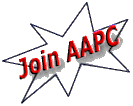




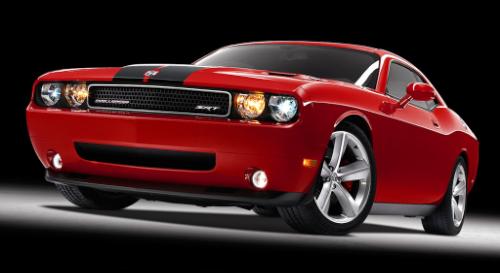

 "Sprint knew they had to have a slam-dunk device in the market," said Jane Zweig, a wireless consultant who runs The Shosteck Group. "They put a lot of money into marketing and worked very closely with Samsung on it."
"Sprint knew they had to have a slam-dunk device in the market," said Jane Zweig, a wireless consultant who runs The Shosteck Group. "They put a lot of money into marketing and worked very closely with Samsung on it." 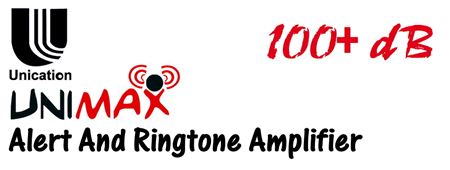

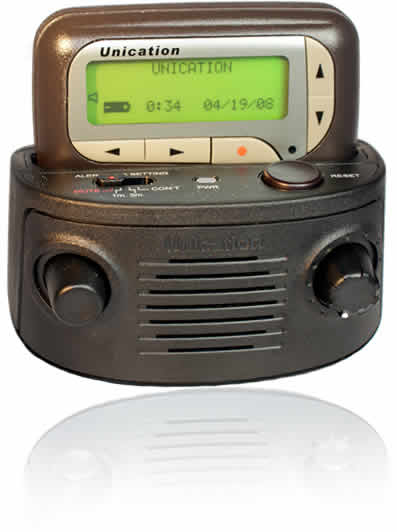

 Instrumental. Innovative. Impactful. These terms served as our guide in our search for this year’s power brokers shaping the present (and future) of mobile technology. The contributions from these masters of the industry over the last 12 months have molded portable devices, policies, wireless technology, and, ultimately, your purchases. We can’t wait to see what they do next. Read on to uncover who we selected as the mobile tech titans to watch in 2008.
Instrumental. Innovative. Impactful. These terms served as our guide in our search for this year’s power brokers shaping the present (and future) of mobile technology. The contributions from these masters of the industry over the last 12 months have molded portable devices, policies, wireless technology, and, ultimately, your purchases. We can’t wait to see what they do next. Read on to uncover who we selected as the mobile tech titans to watch in 2008. 


























